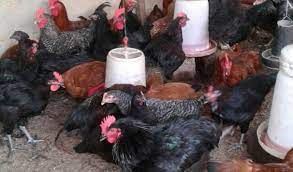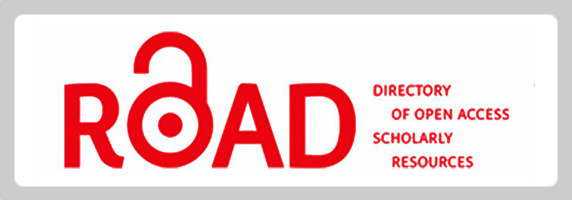Comparative Study of Two Nigerian Indigenous Chickens: Body Weight and Linear Body Measurements
Abstract
This study was designed to identify and provide comparative information that exit between the two Nigerian ecotype chickens, namely: Fulani ecotype chickens and Yoruba ecotype chickens with particular reference to their weight and linear body measurements in Paiko, Niger State, Nigeria. A total of 80 indigenous chickens (comprising 40 Fulani ecotype chickens and 40 Yoruba ecotype chickens) were used in the study. The experimental birds were raised for 24 weeks under intensive management systems. Mean and standard error of means on body weight (BWT), body length (BL), beak length (BKL), body girth (BG), wing length (WL), shank length (SL) and thigh length (THL) were taken and subjected to Pearson correlation analysis to obtain the relationship between body weight and linear body measurements. The findings showed that males of the two breeds were significantly (P<0.05) heavier and had longer bodies, better body girth, beak length, shank length, and thigh length than the females. A comparison of the two breeds also revealed that Fulani ecotype chicken was significantly (P<0.05) better than the Yoruba ecotype chickens for the traits evaluated. Correlation on body weight and linear body measurements of the Fulani ecotype chickens and the Yoruba ecotype chickens were strong (P<0.01) and positively correlated except in shank length (P<0.05) in the Fulani ecotype chickens It is concluded that breed differences do exist between the two indigenous Nigerian chicken breeds studied and these difference are in favor of the males and the Fulani ecotype chickens.
Downloads
References
Abdelqader, A., Wollny, C.B.A. and Gauly, M. (2007). Characterization of local chicken production system and potential under a different level of management practice in Jordan, Journal of Tropical Animal Health and Production, 39:55–164.
Abubakar, M.B., Ambali, A.G. and Tamjdo, T. (2007). Rural chicken production: Effects of gender on ownership,and management responsibilities in some parts of Nigeria and Cameroon, International Journal of Poultry Science, 6(6):413–416.
Adekoya, K.O., Oboh, B.O., Adefenwa, M.A. and Ogunkanmi, L.A. (2013). Morphological Characterization of Five Nigeria Indigenous Chicken Types, Journal of Science Research and Development, 14: 55-66.
Alabi, O.J., Ng’ambi, J.W., Norris, D. and Egena, S.S.A. (2012). Comparative Study of Three Indigenous Chicken Breeds of South Africa: body Weight and Linear body measurements, Agricultural Journal, 7(3): 220 – 225.
Begil, H. E., Zerehdaran, S, Hassani, S. Abbasi,M.A. and KhanAhmadi,A. R. (2010). Heritability, genetic and phenotypic correlations of egg quality traits in Iranian native fowl, British Poultry Science, 51: 704-744.
Egahi, J. O., Dim, N. I., Momoh, O. M and Gwaza, D. S. (2010). Variations in Qualitative Traits in the Nigerian Local Chicken, International Journal of Poultry Science, 9 (10): 978-979.
Fayeye T R., Ayorinde K L., Ojo V and Adesina O M (2006). Frequency and influence of some major genes on body weight and body size parameters of the Nigerian Local Chicken, Livestock Research for Rural Development, Volume 18 Article #3
Food and Agricultural Organization “FAO” (2007). The global plan of action for animal genetic resources and the Interlaken declaration on animal genetic resources, In: Animal genetic resources for food and Agriculture conference. Interlaken, Switzerland, 3-7 September 2007. 33pp.
Gondwe, T.N.P. (2004). Characterization of local chicken in low input–low output production systems: Is there scope for appropriate production and breeding strategies in Malawi?, PhD thesis. Georg August- Universität Göttingen, Germany. Pp.184.
Gueye, E.F. and Bessei,W. (1998). About food bans and taboos on poultry products in Senegal, Land Wirt Tropic Veterinarian, 96: 97-109.
Ige, A.O. (2013). Estimation of genetic parameters in Yoruba and Fulani ecotype chickens of Nigeria, Translational journal of technology, 3 (10): 500-517.
King’ori, A. M., Wachira, A.M. and Tuiteok, J.K. (2010). Indigenous Chicken Production in Kenya: A Review, International Journal of Poultry Science, 9(4): 309-316.
Manyelo, T.G., Selaledi, L., Hassan, Z.M. and Mabelebele, M. (2020). Local chicken breeds of Africa: Their description, uses and conservation methods, Animals, 10: 2257.
Momoh, O.M., Ehiobu, N.G. and Nwosu, C.C. (2007). Egg Production of two Nigeria Local Chicken Ecotype under Improved Management, Proceedings of the 32nd Annual Conference of Nigeria Association of Animal Production, March 18-22, University of Calabar, Nigeria. Pp. 278-281.
Mtileni, B.J., Muchadeyi, F.C., Maiwashe, A., Chimonyo, M., Mapiye, C. and Dzama, K. (2012). Influence of socioeconomic factors on production constraints faced by indigenous chicken producers in South Africa, Tropical Animal Health and Production, 45: 67-74.
Ndofor-Foleng, H.M., Vivian, O.O., Musongong, G.A., Ohageni, J. and Duru, U.E. (2015). Evaluation of growth and reproductive traits of Nigeria local chicken and exotic chicken, Indian Journal of Animal Research, 49(2): 155-160.
Nweke-Okorocha, G.O. and Gunn, H.H. (2022). Estimation of Body Weight Using Linear Body Measurements of Fulani Ecotype Chickens in the South Western Nigeria, Journal of Research in Agriculture and Animal Science, 9(3): 15-22.
Oleforuh-Okeleh, V.U. and Wagoha, R. (2017). Variations in Growth Performance Traits and Economic Analysis of Two Nigerian Indigenous Chicken Strains and their Crossbreed, Nigeria Journal of Animal Production, 44(4): 216-224.
Oluyemi, J. A. and Roberts, F. A. (2000). Poultry Production in warm – wet climate, Spectrum Books Ltd., Ibadan, Nigeria.
Osaiyuwu, O.H., Salako, A.E. and Adurogbangban, O. (2009). Body Dimensions of Fulani and Yoruba ecotype Chickens under Intensive System of Measurement, Journal of Agriculture, Forestry and the Social Sciences, 7(2):
Salako, A.E. and Ige, A.O. (2006). Haemoglobin polymorphism in the Nigerian indigenous chickens, Journal of Animal Veterinary Advance, 5: 897–900.
Shaibu, A., Ma’aruf, B.S., Maigado, A.I., Abdu, I., Ibrahim, Y. and Mijinyawa, A. (2020). Phenotypic Characteristics of Local Chickens in Dass and Tafawa Balewa Local Government Area of Bauchi State, Nigeria, Journal of Animal Science, 22(2): 19-31.
Sola-Ojo, F.E., Ayorinde, K.L., Toye, A.A. and Jatto, O.M. (2013). Comparative studies of Two Nigerian Ecotype Chicken Kept in Battery Cages for Reproductive Performance and Egg Quality Traits, Asian Journal of Agriculture and Rural Development, 3 (2): 38-45.
Semakula, J., Lusembo, P., Kugonza, D.R., Mutetikka, D., Ssennyonjo, J. and Mwesigwa, M. (2011). Estimation of Live Body Weight Using Zoometrical Measurements for Improved Marketing of Indigenous Chicken in Lake Victoria Basin of Uganda, Livestock Research for Rural Development, 23:
Tiamiyu, A.K. (1999). Morphological features of Fulani Ecotype chickens, Proceedings of the 26th Annual NSAP Conference, 21-25 March 1999, Illorin.
Ukwu, H.O., Okoro, V.M.O. and Nosike, R.J. (2014). Statistical Modelling of Body Weight and Linear Body Measurements in Nigerian Indigenous Chickens, Journal of Agriculture and Veterinary Science, 7: 27 – 30.
Ukwu, H.O., Tarhemba, F. and Nosike, R.J. (2017). Comparative Study of Indigenous Chickens in South East and North Central Nigeria: Body Weight and Linear Body Measurements, Journal of Animal Production and Research, 29(1): 1-8.
Yahaya HK, Ibrahim H and Abdusalam S (2012). Correlation between body weight and body conformation of two broiler strains under the same dietary treatment, International Journal of Animal and Veterinary Advances, 4(3): 181 – 183
Yakubu, A. and Ari, M.M. (2018). Principal Component and Discriminate Analyses of Body Weight and Conformation Traits of Sasso, Kuroiler and Indigenous Fulani Chickens in Nigeria, Journal of Animal and Plant Sciences, 28(1): 46-55.

Copyright (c) 2023 Idris Ibrahim Adamu

This work is licensed under a Creative Commons Attribution-NonCommercial-NoDerivatives 4.0 International License.










